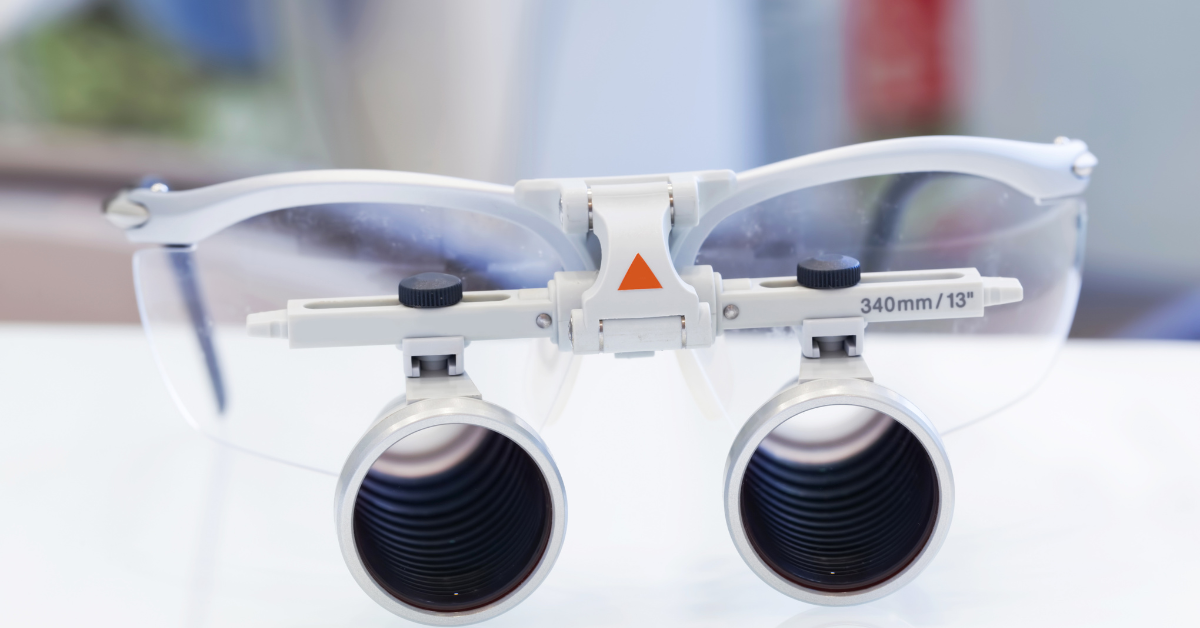What Are the Limitations/Disadvantages of Dental Loupes over a Dental Microscope?

Dental loupes have long been a staple in dental practice, offering magnification that enhances the dentist's ability to see fine details during examinations and procedures.
While the benefits of using loupes are well-documented, including improved visual acuity and potentially better ergonomic posture, they are not without their limitations. Understanding these disadvantages is crucial for dental professionals considering their equipment options. Today we're looking into (no pun intended) the challenges and drawbacks associated with dental loupes.
1. Limited Magnification Range
One of the primary disadvantages of dental loupes is their relatively limited range of magnification. Typically, loupes offer magnification levels between 2x and 6x. While this range is beneficial for many routine dental tasks, it may not suffice for more complex procedures that require finer detail, such as endodontic work or advanced periodontal surgery. In such cases, the higher magnification capabilities of a dental microscope are often necessary.
2. Fixed Focal Length
Dental loupes have a fixed focal length, meaning the working distance is set, and the dentist must maintain a specific position relative to the patient's mouth to keep the field of view in focus. This limitation can lead to discomfort and strain, especially during longer procedures, as the dentist must stay within the narrow ergonomic window that the loupes accommodate.
3. Field of View
While dental loupes improve the ability to see small details, they can restrict the field of view. This narrow focus might lead dentists to miss surrounding context, which could be important for comprehensive treatment planning and execution. In contrast, dental microscopes allow for a wider field of view while still providing the option to zoom in for detailed work.
4. Depth of Field
The depth of field, or the range within which objects appear sharp and in focus, is relatively shallow with dental loupes. This shallow depth can pose challenges during procedures that require a three-dimensional perspective, as the dentist might need to frequently adjust their position to keep different areas of the treatment site in focus.
5. Lighting Limitations
Although many dental loupes come with attached lighting options, the illumination they provide can be less effective than the lighting systems integrated into dental microscopes. Adequate and well-directed illumination is crucial for performing precise dental work, and the less optimal lighting from loupes can be a significant drawback.
6. Ergonomic Constraints
While dental loupes can enhance ergonomics by allowing dentists to sit upright, they still require the user to maintain a relatively fixed posture to align with the loupe’s focal length and field of view. This limitation can lead to neck and back strain, particularly during lengthy procedures.
7. Lack of Digital Integration
Unlike dental microscopes, which often come with built-in capabilities for digital imaging and video recording, dental loupes lack these features. The ability to capture high-resolution images and videos during procedures can be invaluable for patient education, documentation, and collaborative case review.
While both dental loupes and microscopes allow for the incorporation of magnification into your clinical procedures, they have quite a few key differences.
Loupes are the most cost-effective and portable method of incorporating magnification into your clinical procedures. Based purely on cost, loupes are honestly hard to beat and can be seen as a great first step into dental magnification. Loupes are small, which provides superior portability. However, microscopes bring an entirely new level of visual acuity to dentistry, which is what this comparison is ultimately all about.
While microscopes are widely known for their use in endodontics, there are definite benefits for even routine dental procedures. Locating cracks, caries, root canals for endo procedures and performing more accurate restorations with improved margins are just a few areas where a microscope can be an advantageous tool in the dental practice.
The ergonomic benefits of microscopy can provide a much higher level of comfort while allowing you to focus on the tiniest detail of any procedure. The added advantage of video/photo documentation aids in patient case presentation and serves as a clinical reference during treatment planning.
To wrap this up, loupes can be a good start for adding magnification to your arsenal of dental tools but when you’re ready for the next step, a microscope can make a big difference in the level of clarity and detail you’re seeing during procedures. Our best advice? Try both and decide which works best for you.
Questions? Reach Out!
We’re proud to be based in the US, with manufacturing and assembly facilities in St. Louis, MO. This helps us give our customers the best service, domestically and internationally. And, as part of our commitment to our customers, we offer a limited lifetime warranty on our scopes (US & Canada customers only).
If you’re considering adding a microscope to your practice or you just want to learn more about utilizing a dental microscope, we are here to help! Please feel free to reach out at 800-861-3585 or by clicking the button below.


.png)
.png)